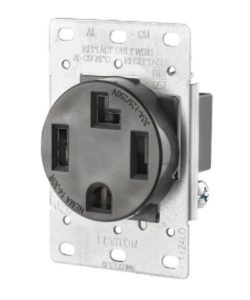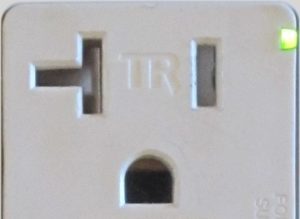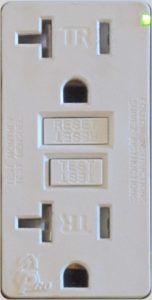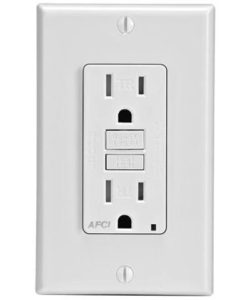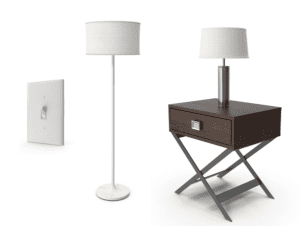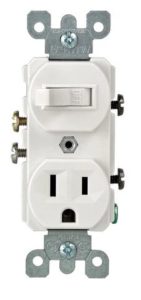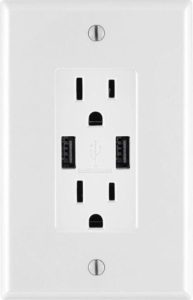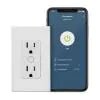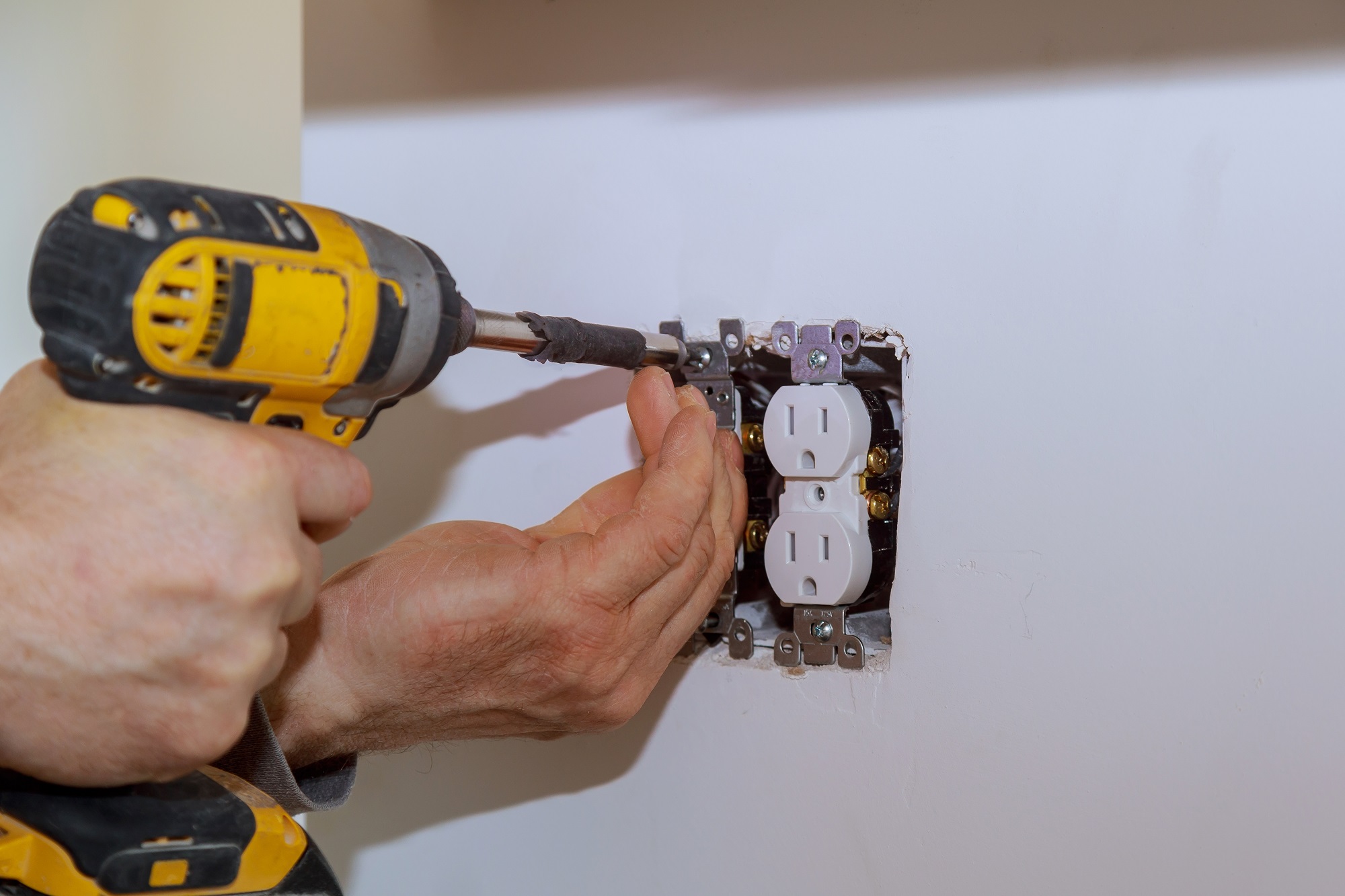
Electrical Outlet Installation In The Pheonix Metro Area
Johnson Power Solutions is a residential, commercial and emergency electrician headquartered in Gilbert, and providing service throughout the entire Phoenix Metropolitan Area. The service area includes every municipality from Sun City West to Florence, Fountain Hills to Casa Grande and everywhere in between. See our full service area.
Expert technicians at JPS have been providing electrical services for over 15 years and can handle any home electrical project, big or small. This includes everything from the electrical panel where the home receives electricity from the city to all switches, outlets, lights and other electrical fixtures.
Of course JPS can install, repair or replace traditional electrical outlets, which are still the most common type. However, you might be surprised how many different options you have beyond the traditional type.
What Are the Different Types of Outlets and Do I Need a Specific One?
The United States has a nationwide system of outlets that can handle the proper amperage and voltage of electronics sold in the US. This is standardized by the National Electrical Manufacturers Association (NEMA).
Amperage and voltage are two measures of electrical current or flow of electrons. Voltage is a measure of the pressure of electrons; amperage is a measure of the volume of electrons. It’s kind of hard to visualize since you can’t see electrons, but you could compare in some ways with fluids like water. A lot of water pushed through a smaller pipe will create more pressure; the options are to increase the size of the pipe or reduce the amount of water flowing through the pipe. It’s similar with electrons.
If you travel outside of the United States, you may see additional types of outlets than the ones mentioned below. So naturally you’d need a traveling converter to use devices like your hair dryer.
Here are the common outlets you might see your home or business:
Single Vs Duplex Receptacle
The overwhelming majority of outlets come with two receptacles, meaning it has the “holes” for you to plug in two devices or electronics. In some cases it makes more sense to have a single receptacle outlet, usually when they have more power requirements as described in further detail below. Anything above 20 amps or 125 volts could justify a single receptacle outlet.
Two-Pronged, 15 amps, 125 volt outlet
In modern homes, the two-pronged outlet is nearly extinct, but older homes may still have them. You may notice the amperage and voltage are the same as the modern three-prong outlet described next.
Some electronics may only have two prongs and if that is the case then they can still be plugged into two-pronged outlets. Yet, if you have any electronics where the plug has three prongs, do NOT remove the third prong in order to use the electronic on that outlet. The options are to use an adapter which you can get at any hardware store, or the better option is to have an electrician like Johnson Power Solutions switch the outlet to a modern three prong outlet. The better option would also include other updates to the home or building with proper wiring and grounding.
Modern Three-Pronged 15 amps, 125 volt outlet
All remaining outlets from here and below will have three prongs. The modern 15 amp, 125 volt outlet will have two vertical prongs and a round ground prong. This is what most individuals would think of as the “traditional” outlet type. It is the most common and the least expensive. It can be used for common household electronics such as lamps or TVs which have minimum voltage and amperage requirements.
Grounding is an important safety concept that is applied to modern electrical systems. Since the human body can conduct electricity, an individual can be electrocuted if there is an overload on the outlet when the person is plugging in an appliance or electronic. The electrons have to go somewhere. So to avoid electrocution, the ground allows for an alternate pathway for the electrons to flow.
20 amps, 125 volt outlet
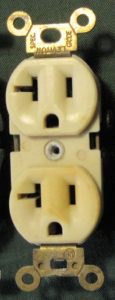
This looks very similar to the three-pronged outlet described above, but the left slot is sideways T-shaped for either a vertical prong or a horizontal prong to be inserted. This is used for appliances that require 20 amps of current, like some washing mashines, dishwashers or space heaters. There might be one or two in your Kitchen. You may also have them in a garage or hobby room.
15 amps, 250 volt outlet

This outlet also has three prongs, but both of the slots which are usually vertical are horizontal. This is used primarily for window air conditioners.
This outlet and the outlets described below require that a circuit must be installed with the outlet to provide the required power. See also wiring services.
20 amps, 250 volt outlet
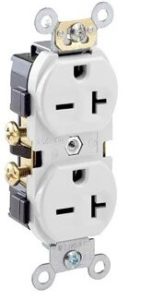
As the amperage and voltage capacity continue to increase, there are still three prongs, but the orientation of the active prongs can vary from vertical to horizontal. One might be vertical while the other is horizontal, or together they might form a chevron shape. The ground prong can also vary from rounded to flat. This the higher range of the most common prong sizes. Higher amperage and voltage outlets described below have thicker and bigger slots for prongs.
This outlet is used for appliances with a very high power draw, such as wall ovens, dryers and hobby shop equipment.
30 amps, 125/250 volt
This outlet is noticeably bigger with larger slots for thicker prongs, and the prongs are oriented differently. The “125/250 volt” is actually a range of voltage, between 125-250. Probably the most common is 220 volts, although some appliances in the United States could use more (up to 250).
The most common uses for this outlet are clothes dryers and electric vehicle chargers.
Tamper-Resistant Outlets
These outlets have shutters that do not allow the insertion of foreign objects other than the shape of the intended prongs, the most common shape being the traditional vertical prongs. Most temper-resistant outlets with the modern three-prong shape will allow electronics with only two prongs to be plugged in.
This has applications for environments with children and individuals with mental handicaps. Tamper-resistant outlets have been code since 2012. If your home was been built after 2012 and is up to code, then it should already have these outlets. If it is not up to code or built prior to 2012, then this is a safety feature worth the upgrade.
GFCI Outlets
GFCI stands for Ground Fault Circuit Interrupter. It’s like a local breaker built-in to the outlet. They are identifiable by the two buttons present between the two outlet receptacles. They are the “Test” and “Reset” buttons. The buttons may be white, but if they are colored then the test button is usually red while the reset button is green.
GFCI outlets should be used where ever the outlet is installed near a water supply, like the kitchen, bathroom, laundry and water heater.
AFCI Outlets
AFCI stands for Arc Fault Circuit Interrupter. While a GFCI outlet interrupts a surge in power when coming in contact with water, AFCI interrupts the circuit when it detects too much heat. The heat can be caused by an exposed wire or a device overheating when plugged in. Examples of how wires become exposed can include rodents chewing through the wires or driving a nail through it by accident.
These outlets provide upgraded safety and are generally used in laundry areas where there can be heat and sleeping areas of the home, providing the most protection especially while sleeping.
Switched Outlets
The outlet used on a switch can be a traditional outlet or any upgraded outlet. Yet, having it on a switch improves convenience since your electronics do not have to be regularly plugged in or unplugged. You can just flip the switch that they are on.
This is more a matter of completing the correct circuit (see wiring), than it is selecting the desired outlet.
Outlet-Switch Combinations
The outlet in an outlet-switch combination is similar to any other outlet. The difference here is the electrical box that contains it and the circuit wiring allow for the outlet and the switch to share a similar space.
USB Outlets
USB outlets have become more and more common as smart phones and other devices have become a more regular part of life. This allows the user to plug their charging cord directly into the wall without the need for a plug converter or “cube”.
USB outlets come in multiple varieties including USB-only oultets and combined USB-traditional outlets.
Outlets With Built-In LED Lighting
Mini LED lighting can be built in to the outlet or outlet cover for mulitple different purposes. Somtimes it’s a tiny indicator light which indicates that power is available. If it’s an indicator on a GFCI outlet and it’s blinking red, then it could indicate that you need to reset it.
Sometimes the recepticle is backlit which could be an indicator light for power or make it easier to see when the room is dark.
Sometimes the lower part of the cover has LED lights which automatically illuminate in dark hallways to show the walkway. This is a built-in night light.
Smart Outlets
Smart outlets can be controlled with a mobile device from virtually anywhere in the world with internet access. Some work on Z-wave technology which is similar to WiFi. When combined with smart switches and other smart devices, the entire home can be automated and controlled with a mobile device. They are usually used in combination with a complete home automation plan that allows you to control your garage, improve security in the home, and record video at your doorbell.
They are not only good for home automation and security, but are also helpful because they monitor power usage and can help make your home more energy-efficient.
(Some images of outlets are from Leviton. Johnson Power Solutions installs Leviton products as well as other brands. GFCI Outlet image CC BY Wtshymanski on Wikipedia)
Electrical Outlet Installation, Repair or Replacement
As a residential and commercial electrician, Johnson Power Solutions can install, repair or replace any of the outlets mentioned above, as a well as any special circuitry required. Here are some common reasons why you might need your outlets to be serviced:
Home new builds – of course a home new build involves complete planning of the entire electrical system, which includes all traditional and upgraded switches and outlets.
Home updating – some perfect examples of outlets that need to be updated include the 2-pronged outlet replaced with a 3-pronged outlet and the 220 volt outlet for modern clothes dryers.
Overloading A Circuit – if you find that you’re over loading a circuit frequently then we can install a new outlet that is not on the circuit. This is commonly discovered during the Christmas season when the home owner has Christmas lights on the same circuit as the garage refrigerator.
Home Safety – A good example is when a home has traditional outlets installed near a water supply when they should be GFCI outlets.
Home Upgrades – There is a difference between simply satisfying building codes and wanting the safest and most efficient electrical system. We can remove the traditional outlets and upgrade them with ones that are tamper-resistant, have circuit interrupters or “smart” connectivity.
Acquiring new appliances or devices with higher power requirements – Similar to purchasing a new electric vehicle which requires it’s own outlet, you may also be acquiring a device, appliance or electronic that has higher power requirements than the traditional outlet provides. This often includes hobby machinery.
Damaged or Defective Outlet Repair or Replacement – Most outlets are built to last for the life of the home, but there are a few that can become defective for multiple different reasons.
Insufficient number of outlets – If you weren’t involved in the design of your home electrical system when your home was built, you may determine that your home doesn’t have enough outlets or enough outlets in the places you need them. Installing new outlets and additional circuits is a much safer and more permanent option than using extension cords or power strips.
220 Volt Outlet Installation For Electric Vehicle Charging Stations and Clothes Dryers
This section could easily have been a line item above where we described multiple reasons for outlet installation and repair, but the automotive market is evolving so quickly now that this service merits its own additional consideration. Only a few years ago the typical consumer just had hybrid vehicles as an alternative to traditional gasoline, the most common of these hybrids being the Toyota Prius.
Now, with the popularity of Tesla and many other vehicle manufacturers following suit, the exclusively electric vehicle market has begun to gain a large portion of the automotive market as a whole. It is continuing to grow as more manufacturers produce their own electric models, which are not only sedans but also vans, trucks and service vehicles.
These vehicles require a charging station in order to charge the vehicle at home. Most charging stations require a 220 volt outlet, which is the same outlet that is used for a clothes dryer. While these outlets are common in the home because of clothes dryers, they are not common in the garage, which is where most new vehicle owners want to put their new chargers.
If you are a new electric vehicle owner, then we can certainly install a 220 outlet in your garage where it is most convenient.
Why Choose Johnson Power Solutions For Electrical Outlet Services?
As a family-owned and operated business, Johnson Power Solutions can provide higher quality services at a more competitive price than the big box companies. This is because our team works with you on a more personal level and costs are kept lean. Johnson Power Solutions has expert technicians which have been providing electrical services for over 15 years. They don’t just know how to fix home electrical systems, they do it with a precise and “type A” method so you know your home electrical system is in excellent order. If you have any outlet issues in your home or business, then contact Johnson Power Solutions today for electrical outlet installation, repair or replacement.



